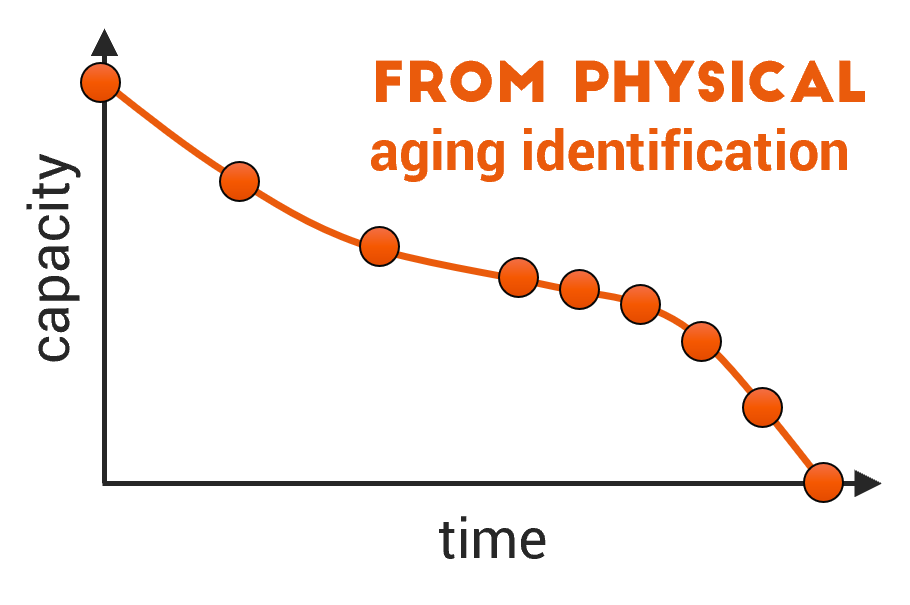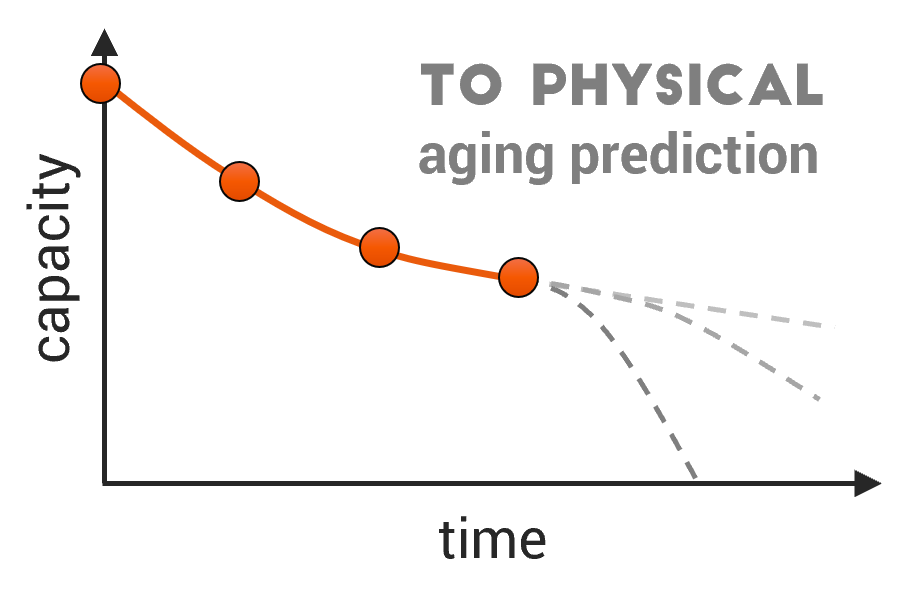How do your battery cells age and why?
Understand it with batemo!
Challenge
Battery Aging

- Which battery components age under what conditions and why?
- What measures can I take to avoid aging and extent lifetime?
- How can I optimize the cell design to extent the lifetime?
- How does battery aging change when I go from cyclic aging to calendar aging?
- What is the right approach to predict battery aging?
Solution
Fast
Physical
Accurate
Our methodology for battery aging is very thorough and based on the idea to understand the separate physical processes that cause the battery to age.
-
Create the Batemo Cell Model and use the deep physical insights to plan the aging tests optimally.
-
Conduct the aging experiments and design intermediate characterization such that physical aging identification is possible.
This is a proper basis!
-
Learn from the aging and physical identification data to understand how your cells age and why.
-
Correlate the aging experiments with the triggered aging mechanism and build a physical aging prediction model.


In this method, step one to step three are difficult but well understood at Batemo. The fourth step of aging prediction is the hardest problem of battery modeling and an unsolved issue in the battery community. This is true for academia, corporates and us. With Batemo, you are on the technological edge of what is possible today.






